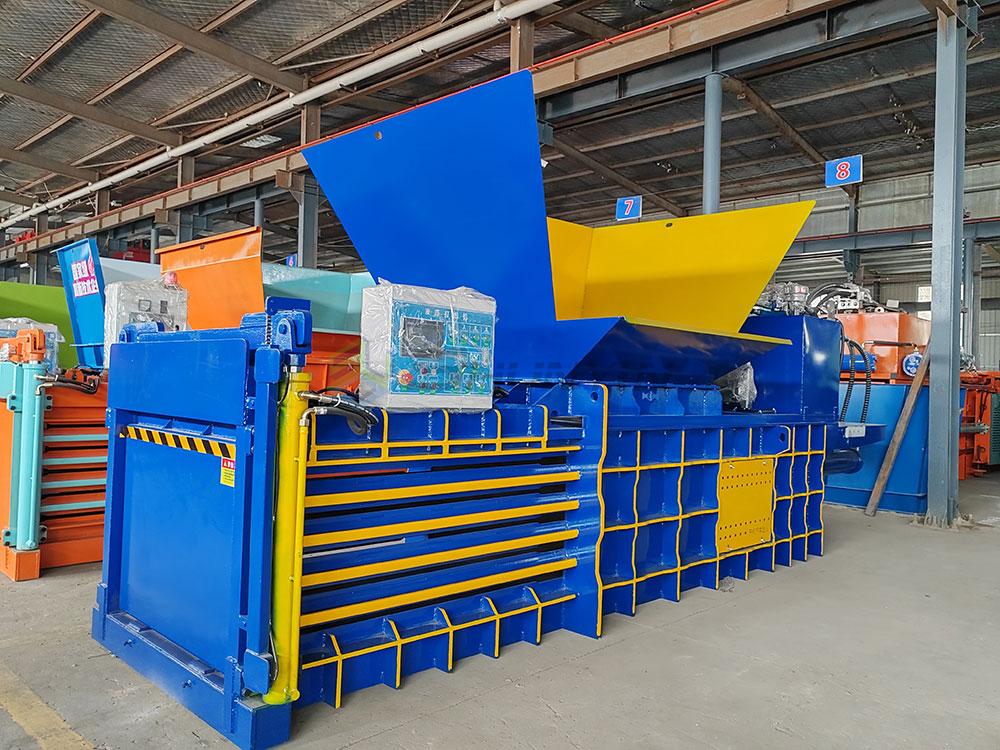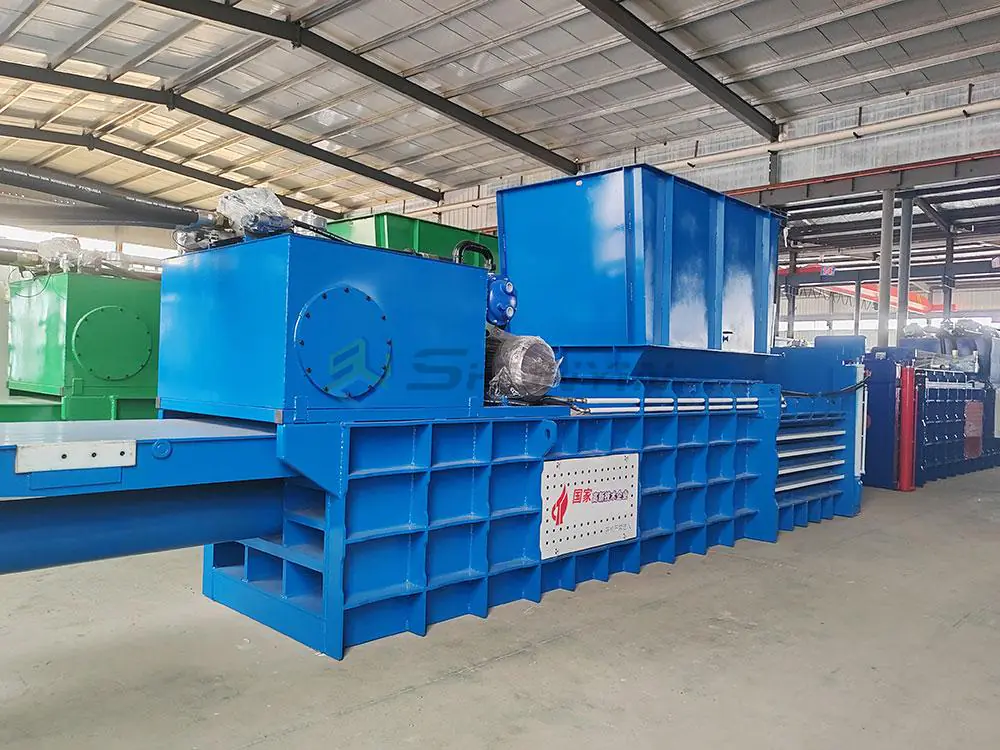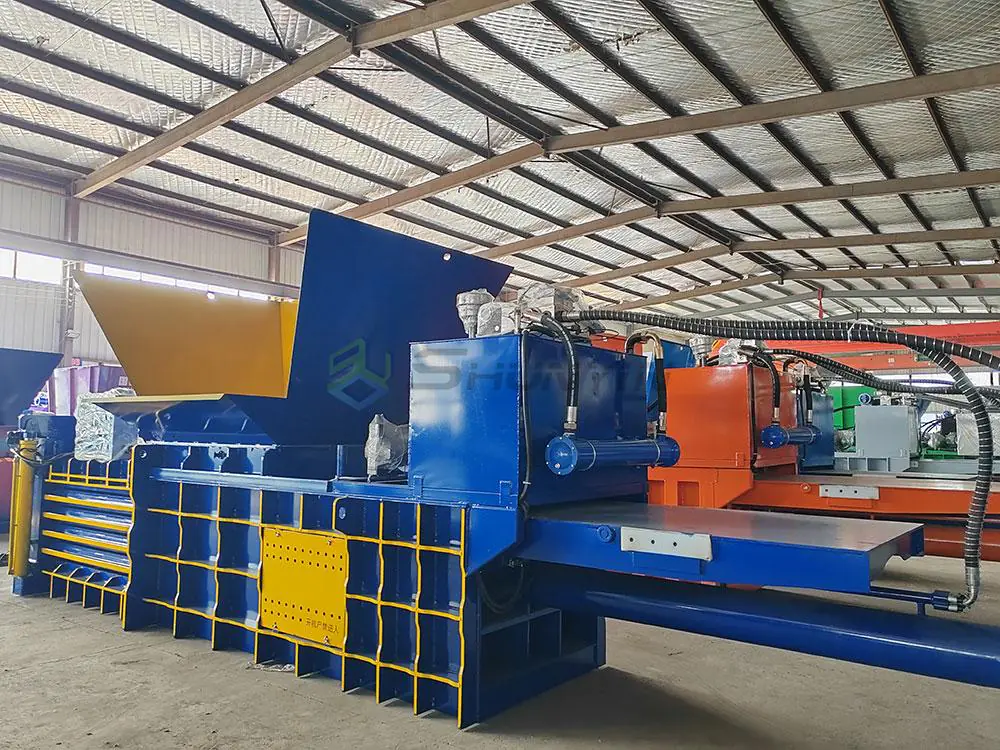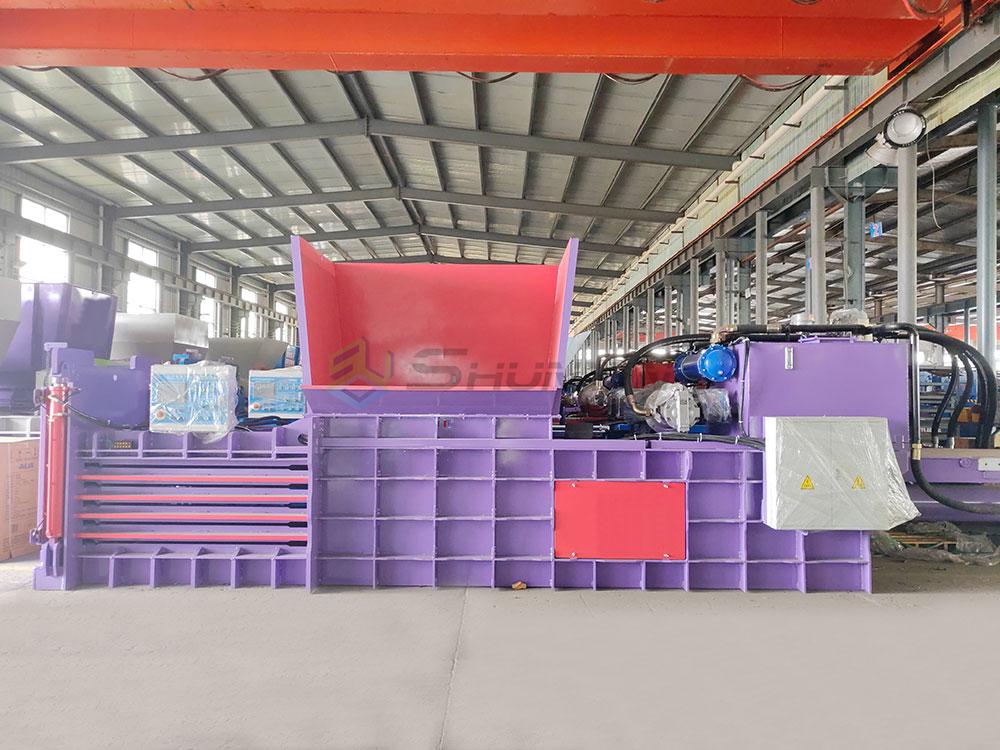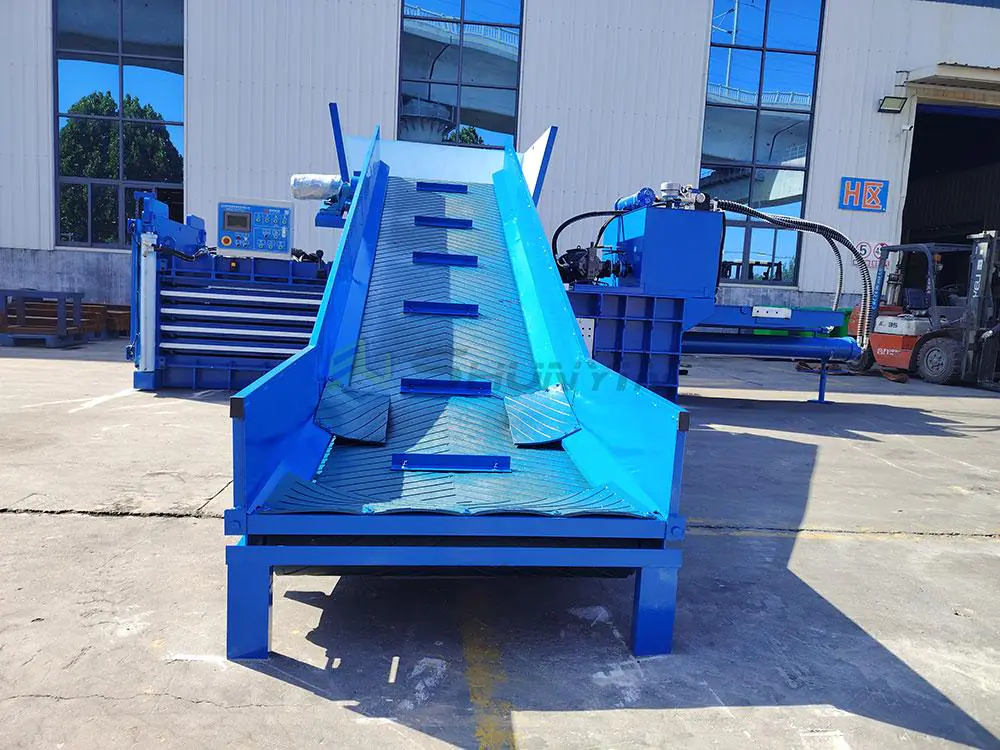
When our SYP-H880 processed 18 tons of PET bottles in 6 hours (breaking factory records), we saw perfect hydraulic synchronization. Let’s reveal the engineering magic behind baling presses.
Hydraulic baling presses work through Pascal’s principle: fluid pressure (150-350 Bar) drives pistons to compress materials. Essential components include hydraulic pumps (2-stage), directional valves, accumulators, and PLC controls. Complete compression cycles take 35-120 seconds, generating 50-2200 tons force with 0.02mm position accuracy.
With 36 hydraulic system patents, we’ve optimized this technology across 1400+ installations. Let’s break down the process through four operational perspectives.
How Does a Hydraulic Press Work Step by Step?
A Manila recycling plant reduced cycle times 28% using our sequential compression method. Here’s the precise 7-stage process:
- Feeding (8-25 seconds): Material enters through conveyor/forklift
- Pre-compression (12s): Initial 3:1 volume reduction (250-600 PSI)
- Shearing (Optional, 6s): Cuts tough materials with 30-100mm blades
- Main compression (15-35s): Full hydraulic force (1500-6000 PSI)
- Pressure holding (8s): Maintains tonnage for material bonding
- Ejection (6s): Finished bale exits through discharge door
- Reset (5s): Cylinders retract to original positions

Cycle Time Optimization
| Component | Standard | Optimized (Ours) | Time Saved |
|---|---|---|---|
| Valve Response | 0.8s | 0.2s | 0.6s |
| Decompression | 12s | 6s | 6s |
| Door Closing | 5s | 2.5s | 2.5s |
| Total Cycle | 98s | 73s | 25s (25.5%) |
Our dual-pump system achieves 40% faster oil flow, letting Sydney clients process 200+ extra bales daily.
How Does a Bale Press Work?
A Johannesburg mine increased copper scrap density by 300% with our dual-platen press. Pressure dynamics make the difference:
Key Force Generation Elements:
- Hydraulic pump (15-75kW): Generates fluid pressure
- Cylinder bore size (80-400mm): Determines force output
- Valves: Control oil flow direction/speed
- Accumulator: Maintains pressure consistency
- Pressure gauge: Tracks real-time force (0-6000 PSI)

| Manual | Hydraulic | Ratio | |
|---|---|---|---|
| Force Generation | Human Power | Fluid Pressure | 500:1 |
| Consistency | ±40% | ±1.8% | 22x Better |
| Energy Transfer | 40% | 92% | 2.3x Efficient |
| Safety Risks | High | Controlled | 82% Safer |
Pro tip: Our pressure sequencing technology1 alternates between 3 cylinders – Chicago clients achieved 27% higher density through staggered compression.
What Is the Use of Hydraulic Baling Press Machine?
A Mumbai shipyard recovered $2.8M/yr in steel scrap using our HD-2200H. Core applications:
Industrial Applications:
- Metal recycling (82% market share)
- Waste management (22-45% cost reduction)
- Textile repurposing (9-15x density increase)
- Agricultural residue (biomass fuel)
- Paper/cardboard (transport optimization)

Industry-Specific Configurations
| Industry | Pressure | Bale Size | Value Added |
|---|---|---|---|
| Automotive Scrap | 2200T | 1.5x1m | $310/T |
| PET Recycling | 600T | 0.8×0.6m | $850/T |
| Textile Waste | 150T | 1.2×0.5m | $220/T |
| E-Waste | 350T | 0.4×0.4m | $12,000/T |
Our modular system adapts to 18 material types – request configuration demo.
How Does a Baler Machine Work Step by Step?
A Seoul electronics manufacturer automated 93% of their process with our SYP-AI900. Modern workflows blend mechanics and digital controls:
- Material input (Weight/Sensor verified)
- Compaction prep (Auto-level distribution)
- Pressure build-up (Ramp-up algorithm)
- Density monitoring (Pressure-time integration)
- Tying/ejection (Auto-strapper engagement)
- Data logging (IoT performance tracking)

Manual vs Automated Operation
| Function | Manual | Auto | Improvement |
|---|---|---|---|
| Cycle Time | 120s | 68s | -43% |
| Bale Consistency | ±18% | ±3% | 6x Better |
| Labor Cost/Bale | $1.20 | $0.15 | 87% Saving |
| Production Logging | Paper | Cloud | Real-time AI |
Our Machine Vision system detects material contamination with 99.4% accuracy – reducing rejected bales by 78% in EU facilities.
Conclusion
Hydraulic baling systems achieve peak efficiency when pump flow rates (12-600 L/min) perfectly match cylinder sizes and operational cycles. Our 25-year experience ensures <0.5mm rod alignment and 0.02ms valve timing – critical for processing 220+ cycles daily without performance loss.
Schedule a virtual factory tour to see hydraulic baler production. Share your material specs for a customized machine proposal with 3-year performance guarantees and lifetime maintenance plans.
-
Discover how pressure sequencing technology can improve the performance and efficiency of hydraulic systems in industrial applications. ↩


